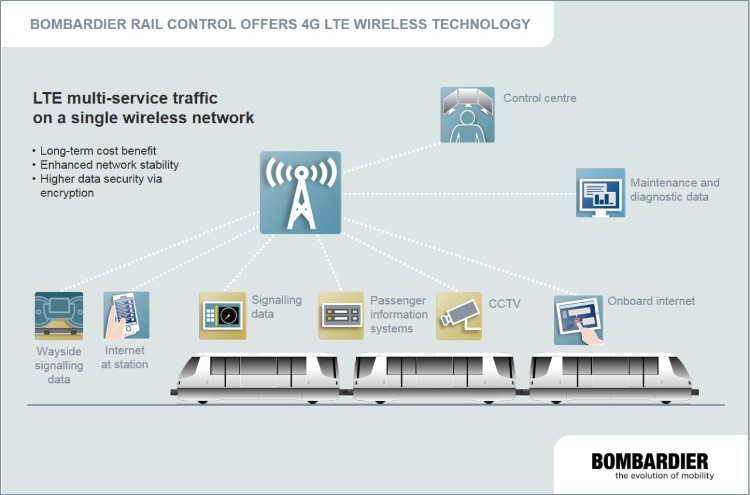- Tests were conducted to verify the ability of LTE networks to support communications-based train control and multiservice solutions
- LTE networks were tested against Bombardier’s requirements for latency, packet loss and the ability to prioritize safety-critical applications
- Future LTE communications-based train control systems will enable train operators to manage traffic in a more efficient and safe manner
Ericsson (NASDAQ: ERIC) and Bombardier have completed trials of LTE networks for railway solutions at simulated speeds of up to 200 kilometers per hour. A total of 11 tests were conducted in a laboratory to determine the ability of the LTE networks to support communications-based train control (CBTC) and multiservice solutions. Examples of multiservice solutions are closed-circuit television (CCTV), voice, platform information, advertising and Wi-Fi for passengers.
CBTC uses high-resolution location determination and high-capacity data communications – such as those enabled by LTE networks – to support automatic train protection, operation and supervision functions. With more accurate information about the exact positions of trains, operators can manage traffic in a more efficient and safe manner. CBTC systems are more reliable than older train control systems, require less wayside equipment, have built-in redundancy features, and enable operators to make optimal use of tracks and trains by responding to demand more swiftly and efficiently.
In the CBTC tests, the LTE networks achieved uplink and downlink latencies far below the threshold of 100 milliseconds and packet losses approaching zero (anything less than 0.5% was considered a pass mark). Quality of Service capabilities built into Ericsson’s equipment also allowed for the preemption and prioritization of mission-critical railway services.
Charlotta Sund, Head of Customer Group Industry & Society at Ericsson, says: “The results of the tests performed to date are very promising and we will continue to test a variety of modems to ensure we can provide robust LTE networks for rail applications. We aim to develop solutions that ensure enhanced rail safety through communications-based train control and CCTV, as well as enhanced entertainment for passengers through services such as voice, platform information, advertising and Wi-Fi.”
To learn more about what Ericsson has to offer the transport industry, join us at InnoTrans 2016 in Berlin from September 20 to 23.



















